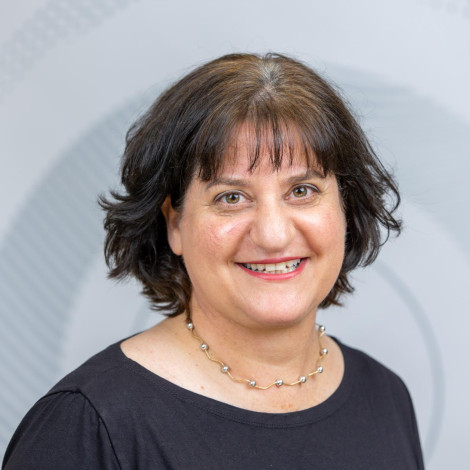
Dr. Rakefet Dilmon
CV
Employment
2013-… Talpiot College, Tel Aviv— Head of the Hebrew Language Department
2001-… Department of Hebrew and Semitic Languages, Bar Ilan University—teacher in the Diploma Studies in Editing (Hebrew) and in the Hebrew and Semitic Languages Department.
2001-… Talpiot College, Tel Aviv—lecturer in linguistics.
2009-… The Hebrew University of Jerusalem, The Institute of Criminology – lecturer in language and crime.
2001-2009 Ashkelon Academic College—lecturer in Hebrew expression.
2008-… The Israeli Association for the Study of Language and Society - coordinator of editorial board of journal Israel Studies in Language and Society.
- Department of Hebrew and Semitic Languages, Bar Ilan University—coordinator of editorial board of the journal Hebrew Linguistics.
Education
1998-2004 Bar Ilan University—Ph.D. in Hebrew language (in direct track Ph.D. program). Subject of doctoral dissertation: “Linguistic Differences Between Lie and Truth in Spoken Hebrew.”
1994-1995 The Hebrew University of Jerusalem—teaching certificate and diploma in editing.
1992-1995 The Hebrew University of Jerusalem—BA in Hebrew language and Jewish philosophy.
Military service
Non-commissioned officer teaching new immigrants at Education Corps base.
Publications
- (With Timor, U.) The Narrative of Men Who Murder Their Partners: How Reliable Is It?, International Journal of Offender Therapy and Comparative Criminology, 57 (9), 2013 [DOI: 10.1177/0306624X13494074]
- False speech, linguistic aspects in Hebrew, The Encyclopedia of Hebrew Language and Linguistics, in print.
- “It's her fault”: Content analysis of the stories told by men who murdered their partners, Israel Studies in Language and Society, 2 (1), 2009, pp. 78-97
- Different types of oral discourse and their suitable genre (in Hebrew), Helkat Lashon 42, 2011-2012, pp. 72-95.
- Between thinking and speaking—Linguistic tools for detecting a fabrication, Journal of Pragmatics, 41, 2008, 6, pp. 1152-1170.
- Fiction or Fact? Comparing True and Untrue Anecdotes (in Hebrew), Hebrew Linguistics, 59, 2007, pp. 23-42.
- Linguistic Differences Between Lie and Truth in Spoken Hebrew - Doctoral Dissertation, Bar Ilan University, Ramat Gan, Israe, 2004.
- On The way to independency – Incoraging Linguistic creativity in the Ulpan, Hed Ha-Ulpan He-Hadash, 86, 2003, http://cms.education.gov.il/NR/rdonlyres/2AB42A85-70A7-4772-9395-BEEAA51E644F/88217/8610.doc
Book review
- Review of "The Israeli Comprehensive Lexicon of Popular Hebrew Idioms", written by M. Fruchtman, E. Sher, & Z. Shehory-Rubin (in Hebrew), Hebrew Linguistics, in print.
Lectures/Papers Presented at Conferences
On the way to independence – Encouraging linguistic creativity in the Ulpan. Israel Association of Applied Linguistics (IAAL) Conference (September, 2002).
Language of the lie: Linguistic characteristics of the language of falsehood as opposed to the language of truth. Israeli Linguistic Society Conference (April, 2004).
Who is lying? A linguistic instrument to distinguish between the true and the falsified story. Israeli Association for the Study of Language and Society Conference (June, 2004).
Type and genre – Different types of oral discourse and their appropriate genre. Israel Association of Applied Linguistics (IAAL) Conference (October, 2005).
A text put to the test of the lie detector. Hebrew and Its Instruction Study Day, Mofet Institute (July, 2006).
“She caused it" – Content analysis of the stories told by men who murdered their partners. Discourse and Gender Conference (February, 2009).
Crimes of passion – Analysis of the narratives of wife-killers. Lecture delivered at Language and Communication Study Day, Mofet Institute (February, 2009).
What is his real story? – Linguistic Analysis of the narratives of wife-killers. Lecture delivered at "Hebrew – a Living language" Conference, Oranim college (February, 2010).
Cognitive-semantic analysis of the discourse of sex offenders, NAPH conference, L.A. (June, 2012).
Identifying "suspicious utterances" in an interview using linguistic analysis, World Congress of Jewish Studies, Jerusalem (August, 2013).
Last Updated Date : 11/04/2024



